HN delves deep into the intriguing history of whisky to discover the taste preferences of the world’s most prominent master blenders and find out what the industry is set to offer both its loyal followers and newly converted fans in the coming years
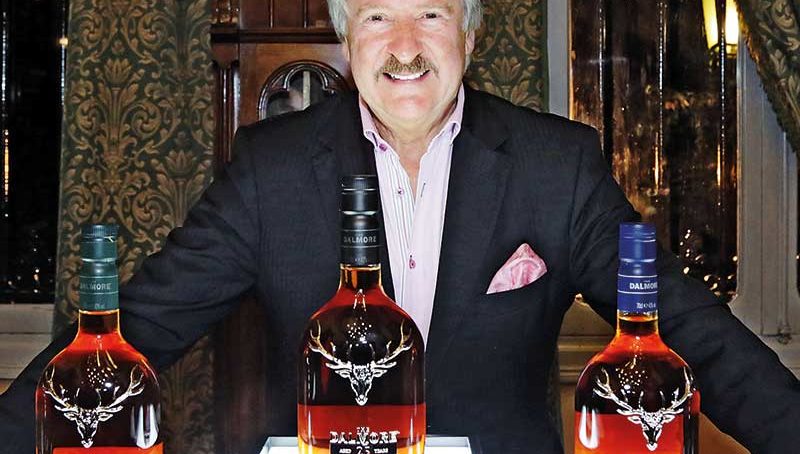
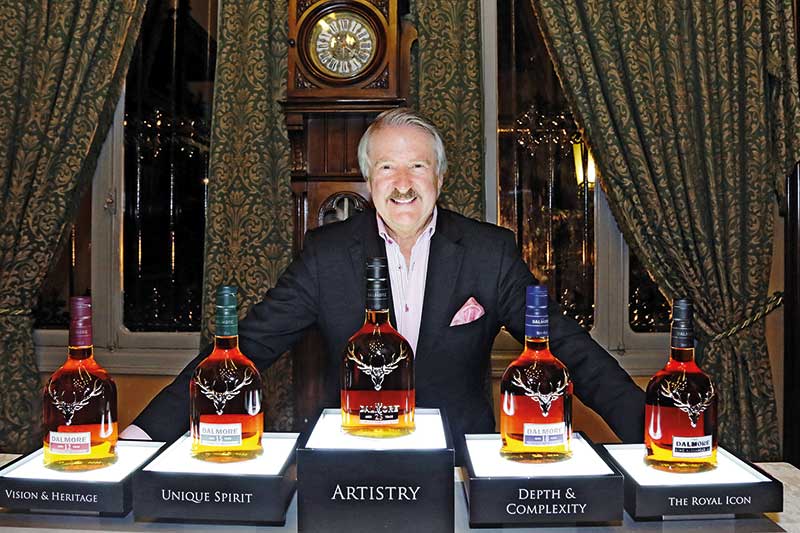
Master Blender Richard Patterson, The Dalmore
In the last five years, tastes have changed significantly, especially as the millennial generation begins to make its mark. What are your thoughts?
Scotch whisky is continuing to boom internationally, from the many whisky festivals, to coverage in the press, sales, new distilleries, innovation and the almost two million visitors to our distilleries – the awareness of Scotch especially for single malts has never been greater. And it’s fantastic news for the industry! In the last five years, consumers the world over have become far more educated, and their tastes even more discerning. This means we must continue to create products using the best ingredients, woods and processes, as well as continually innovating. We must never at any stage become complacent in our quest for excellence.
What marketing strategies have the global whisky brands employed to distinguish themselves and what sets them apart?
Satisfying and stimulating our discerning consumers with many different cask expressions remains on top of most whisky company’s agendas. Today the consumer is being spoilt for choice, with many tailored financially to their needs – the choice is endless, from sherry to port wine and more. Catching the consumer’s eye remains critical, but at the same time, remaining true to your own style is equally important too.
Which Middle Eastern countries have you visited and what are some of the things you’ve noticed in the way that Arabs like to enjoy their whisky?
From the UAE, Oman and Qatar to Lebanon and Bahrain, each country and city presents a different view, but as a generalization they really are beginning to know their whiskies. The Middle East is a place where consumers are looking for the very best, so high-quality presentation is key. Drinking aged single malts and deluxe blends still appears to remain popular, along with the addition of ice, although some younger consumers are beginning to thankfully avoid it.
What’s going through your mind when you’re creating a new blend?
Only the best will do! A master blender is always creating new concepts with the respective stocks they have to work with in their inventory. Perfecting the ‘right balance’ remains paramount to their ideals, along with their passion, which must remain relentless, despite the many obstacles they are likely to face. When a blend or even a single malt expression is created in the sample room – the real impact will come when it is formally prepared at the bond, when it may require a final adjustment, refining or even a major change to the different components. One thing is for sure – the ‘bedding down and marrying’ will be a critical factor to achieve his expectations. Therefore, they must be patient and prepared to wait if they want to achieve the highest standard possible. ‘Time is his Master’ – you simply cannot replace it and through time, you can achieve most things.
What do you think the ‘Next Big Thing’ is going to be in whisky in the coming year and why?
It’s difficult to say; for the time being cask finishes, enhancements, exclusivity and limited editions will continue to grow.
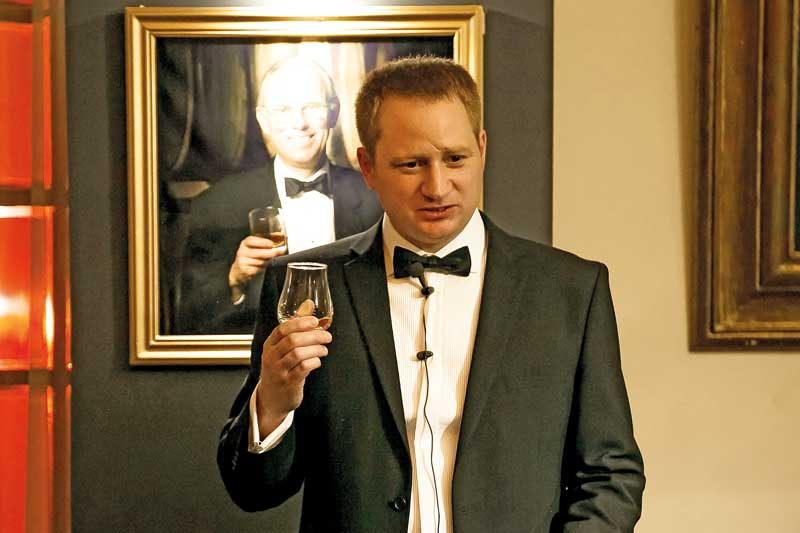
Master Blender Kevin Balmforth, Chivas Regal
What were the challenges related to the creation of Chivas’ latest innovations –Mizunara and Chivas Regal Ultis?
Creating any new Chivas Regal is certainly a challenge, but also a very exciting time in the blending dept; it’s not every day you get to create a new Chivas Regal. The first challenge for any new product is to ensure the signature house style is maintained. It’s important that from the first taste, you can recognize the Chivas style, even when incorporating new flavors and experiences. We achieve this by building any new blend from the ground up, combining flavors one at a time until we are happy we have achieved the profile we are searching for. That sounds fairly straightforward, but when you think about all the variables and flavor combinations, it becomes a very challenging prospect. It would not be possible at all without a blender’s three greatest assets: their nose, their knowledge and what I call the ‘blenders legacy’, more commonly known as the cask inventory. Within the inventory, we have in excess of 6 million casks and a massive array of flavors to work from. Just a few of the considerations that give different flavors we have to think of when constructing a blend are: which of the large range of different products to use; the various cask types within those products; how many times each of those cask types have been previously filled and then multiply that flavor creation by all the varying ages! I think it’s safe to say we are never going to run out of ideas or new Chivas Regal expressions.
What have been some of Chivas Regal’s most significant innovations in the last five years to ensure you meet new and changing demand?
We are constantly experimenting and trying out new flavors, such as rare oak species and new types of cask finishes. In fact, I can tell you that just last week at the blending dept. we were currently working on in excess of 40 new projects and within those projects there is often more than one new whisky expression. All in all, we are actually working on in excess of 100 new whisky expressions. So while not all these trials and experiments make it to the bottle, you can certainly expect more leading innovation from Chivas Regal. Our goal is to provide exciting new products and flavors, but crucially, not at the expense of our traditional methods.
Chivas Regal has lent its support to the mixology community with their Masters program. What can you tell us about that?
Blenders are essentially flavor experts and mixologists are flavor experts, so we have a lot in common. It’s pretty incredible what the top mixologists can achieve using fresh local ingredients and combining these with a whisky like Chivas XV. I am a big supporter of drinking Scotch whisky the way you want to drink it, whether it’s neat, with water, with ice or in a cocktail. For me, there are few better drinks than a really well-made Chivas Sour! Like blenders, mixologists never stop learning, it’s a big world and there are many flavors out there. The key is to experiment. The Masters program identifies and celebrates the array of talent and expertise in the mixology community; together, we are breaking those old barriers of how scotch should be drunk.
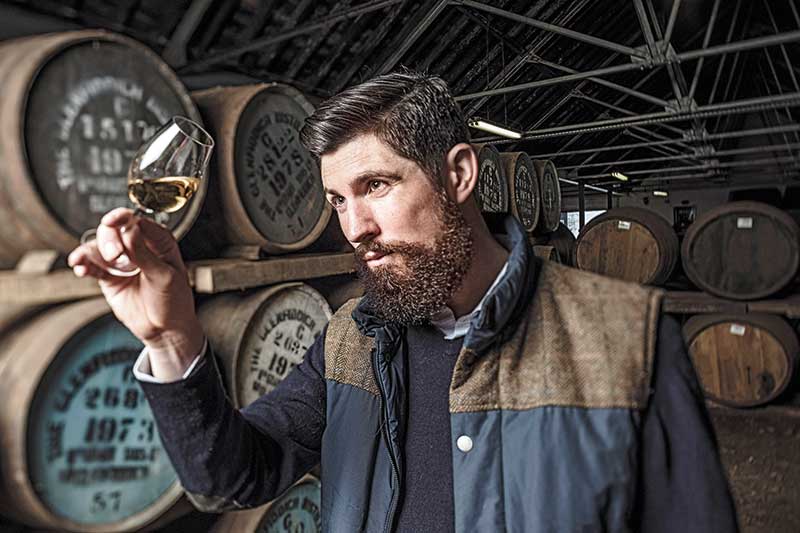
Global brand ambassador, Struan Grant Ralph, William Grant & Sons Brands Ltd.
In the last five years, tastes have changed significantly, especially as the millennial generation begins to make its mark. What are your thoughts?
I’d say whisky tastes have become a lot more refined, with the generation of whisky drinkers being better informed and more educated on whisky than at any time before. For us, that has meant being able to experiment more with cask finishes and new products to appeal to this empowered generation of whisky drinkers.
What marketing strategies have the global whisky brands employed to distinguish themselves and what sets them apart?
Glenfiddich launched the Experimental series in both the UAE and Lebanon over the last two years and has seen great results in both markets, with an existing community of whisky drinkers welcoming the initiative. We did this by telling new stories about an old traditional whisky-making culture and creating new products, which were both high quality and exciting, and by hosting launch parties in both markets.
What do you think the ‘Next Big Thing’ is going to be in whisky in the coming year and why?
I think continued innovation and experimentation will be big in the coming years. I also think whisky producers will start to address changes in our climate and how to contend with increasingly volatile weather.
The modern consumer has acquired a diverse palate, while the cocktail culture has played a significant role in developing this trend. What are your thoughts on this topic?
The heyday of the cocktail was arguably 100 years ago, when the era of classic cocktails gave consumers a taste for spirits. The modern trend is an extension of that, with modern consumers enjoying drinks that were created years ago.

Co-owner, Christoph Nyfeler, Langatun Distillery
Tastes have changed significantly, especially as the millennial generation begins to make its mark. What are your thoughts?
We’ve definitely seen a change in this matter. The focus is much more on the range of different flavors. Loads of distillers are testing new casks. If you look back, the industry was focused on sherry and ex-bourbon and the flavor range was definitely more limited. Customers, young and older, are much more experimental and are eager to try new cask finishes. This opens doors not only for Langatun, but for many upcoming distillers. Quality of the distillation is key, even more so if you launch younger whiskies. It’s definitely positive for us.
As the brand’s managing partner, what are your personal concerns when it comes to evolving the brand?
Global marketing. Without very deep pockets for global branding and advertising, we always have to find ways of putting ourselves on the map of whisky drinkers. I believe in personal events, talks, tastings, masterclasses and adding a personal touch. Besides the whisky itself, people love true stories, family-owned distilleries. But of course, it means travelling the world as an owner and master blender.
Every master blender has their own individual nose and palate. How do you ensure consistency?
Selecting the right cask is a challenge and we do it by hand and nose. Every cask is selected thoughtfully and only the best vineyards with outstanding wines will do the job. Before we bottle our single malt, we always have a panel of five staff members to ensure a well-balanced and consistent selection. Also, my personal preference should not stand in the way of releasing a great single malt.
What’s going through your mind when you’re creating a new blend?
There are two main parts. I think of the combinations of how a whisky is consumed: with a cigar and with food (cheese and chocolate being my favorites). I want to be able to create stories that were lived by our people. I am thinking who will enjoy my whisky most and how can I satisfy our regular Langatun lovers. And, if I create a new single malt, I have to be true to our brand, our philosophy and our history. As a boutique distillery, we will find our guests and consumers through the quality of our spirit.
What do you think the ‘Next Big Thing’ is going to be in whisky in the coming year and why?
I believe the market will increasingly explore unconventional ways of creating a whisky. New producers will pop up and new methods of fast-maturing a single malt will better establish themselves. This will be a challenge for old-school distillers, such as Langatun.
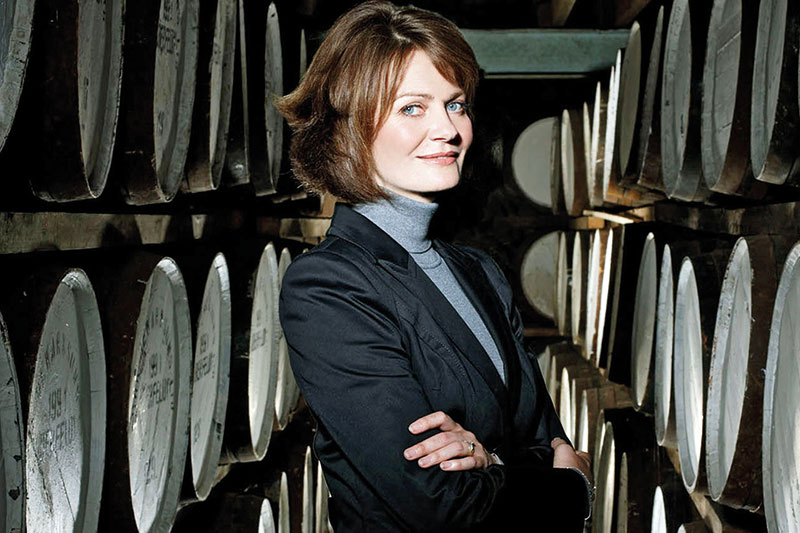
Whisky Portfolio Master Blender, Stephanie Macleod, John Dewar and Sons
Brands innovate to accommodate rising demand, although given that whisky takes time to mature, this trend inevitably produces challenges. How do you balance both elements?
Finishing in casks provides a way of introducing different nuances to our whiskies and forward planning. As a team, we hold regular innovation sessions and take time to experiment with flavors. True innovation takes research, time and careful planning in whisky; you have to have respect for the category guidelines and take inspiration from the creativity that has come before.
Every master blender has their own individual nose and palate. How do you ensure consistency?
We have recipes and cask type profiles for all of our blends, and blend strictly in accordance with these criteria. As well as myself, I have an assistant and a sensory panel who also assess all our blends before they are bottled.
What marketing strategies have the global whisky brands employed to distinguish themselves and what sets them apart?
I especially like what Stranger & Stranger have done with our Aberfeldy gold bar tin; they have brought the story of Aberfeldy to life – the gold in the water, the preciousness of the whisky and the gold color, reflecting the main tasting note of honey.
What do you think the ‘Next Big Thing’ is going to be in whisky in the coming year and why?
For Dewar’s we have a number of beautiful Single Malts Exceptional Casks across our distilleries Aberfeldy, Aultmore, Craigellachie and Royal Brackla. Also, we have a range of Super Premium Blends which we are about to launch, where I’ve taken inspiration from our first master blender, AJ Cameron, and experimented with our ageing process. These launch in March next year.
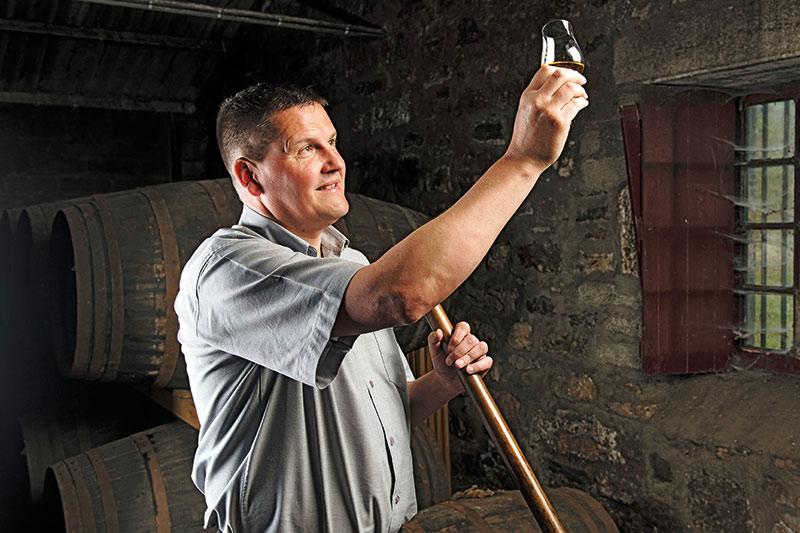
Master Distiller, Graham Coull, Glen Moray
What industry changes have occured in the last five years?
The whisky business is much faster moving these days and the days of a consumer drinking the same blend or single malt all their life have gone. Consumers are much more willing to move out of their comfort zone and try something different.
What’s going through your mind when you are creating a new blend?
I start at the end by trying to understand exactly what the end consumer is looking for in the blend. The answers to my questions will give me clues as to the components I should use. Once I have the ‘ingredients’ in my mind I then play around with the quantities to achieve the desired result. The challenge is when you need to substitute one ingredient for another but achieve the same final taste. That is where the magic comes in…
Every master blender has a different nose and palate. How do you ensure consistency?
It’s all about getting things right at the beginning of the process. Careful distillation of the spirit and selecting the best casks for maturation is the best start in life a blend can get. If I get that correct, then creating the blend is just a case of fine-tuning.
What are your personal concerns in moving the brand forward?
To continue to grow, we need to continually innovate to keep consumers on board without compromising on consistency and quality.
What do you think the ‘Next Big Thing’ in whisky will be in the coming year?
I would like to see a resurgence in the popularity of drinking blended whisky. We have all been at fault of dumbing down blends and encouraging consumers to switch to single malts at the earliest opportunity. To reverse this trend, we need to send out different messages and educate the consumer of the similarities between single malt and blended scotch.
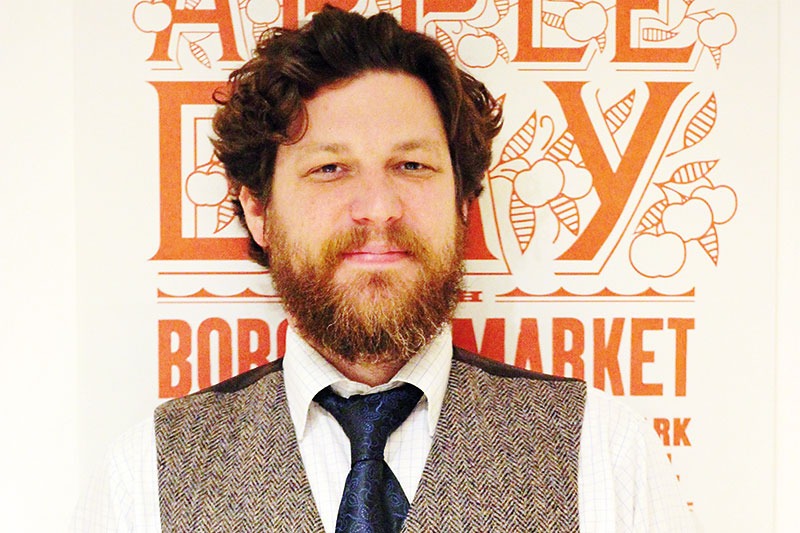
Rob Allanson, global ambassador of Whisky Live Network and editor of Whisky magazine
Tastes have changed significantly, especially as the millennial generation begins to make its mark. What are your thoughts on these new developments?
I think at the moment whisky seems to be getting sweeter. Those huge tannin sherry bombs are few and far between, it seems. There’s a lot of bourbon cask-driven sweetness on the market at the moment; that’s not a bad thing, to be honest, but it was not that way five or six years ago. I think it’s great that the millennials have embraced and started to drive the cocktail scene, but going back to the old classics; you cannot beat a decent, well-made Manhattan.
What marketing strategies have the global whisky brands employed to distinguish themselves?
It’s interesting that in trying to grab a piece of the millennial market, it feels like a lot of brands are trying the same thing over and over. For me, the ones who stand out are embracing their history and making it interesting, be that Japanese, American, Australian, South African, Scottish or any other nation. I think what grabs the drinker is a story; a good and true story that makes them feel part of the gang, almost part of the distilling team. The problem with a gimmick is just that – it’s a gimmick. If it isn’t rooted in the truth, brand history or home, I think people see through it.
What do you think the ‘Next Big Thing’ is going to be in whisky in the coming year and why?
I think we are going to start seeing more interesting whisky coming from more areas. English whisky is growing slowly but surely, Irish is on fire, as are the craft and big producers in America. Don’t ignore Australia, South Africa, Taiwan or places like Sweden. We are going to have so much to explore. I think we will also see more age statements returning. Also, don’t forget Scotland, there is going to be some interesting liquid coming out in the next few years…
What whisky brands would you take if you were asked to spend an entire year on a remote island?
1. Black Bush This was one of the first whiskies I ever tried. It was my mother’s favorite. She was from a village not far from the distillery. Drinking it always reminds me of her sitting at the kitchen table having great chats or talking about food and recipes.
2. Highland Park 12 My father has a boat on Windermere in the English Lake District park. When I go and see him, this is our tipple for sitting on the back of the boat, watching the sun setting and putting the world to rights. I have visited the distillery a few times and love its connection to the land and history of Orkney.
3. Redbreast 12 I adore Irish pot still whisky. It is soft with a sweet spiciness. This takes me to peat fires and chatting all night with my partner Kate (who came with me last year to Beirut). It is just a wonderful whisky, especially if paired with a good pint of Guinness.
4. Johnnie Walker Black If you are to appreciate a good single malt, I think you need to appreciate the blends too. This for me is the benchmark. Balanced, complex and always bang on the mark. It’s a welcome sight at a bar when I am traveling and end up somewhere I haven’t been before. This is a drinks cabinet staple.
5. Balcones Brimstone I wanted to choose one esoteric whisky and this for me is almost otherworldly. It’s like being trapped in a sauna with a bacon sandwich. The smoke profile is crazy, and the sweetness and tannins just punch you in the face. Occasionally I like a whisky to kick back and remind me why I love this industry.
ON THE MARKET
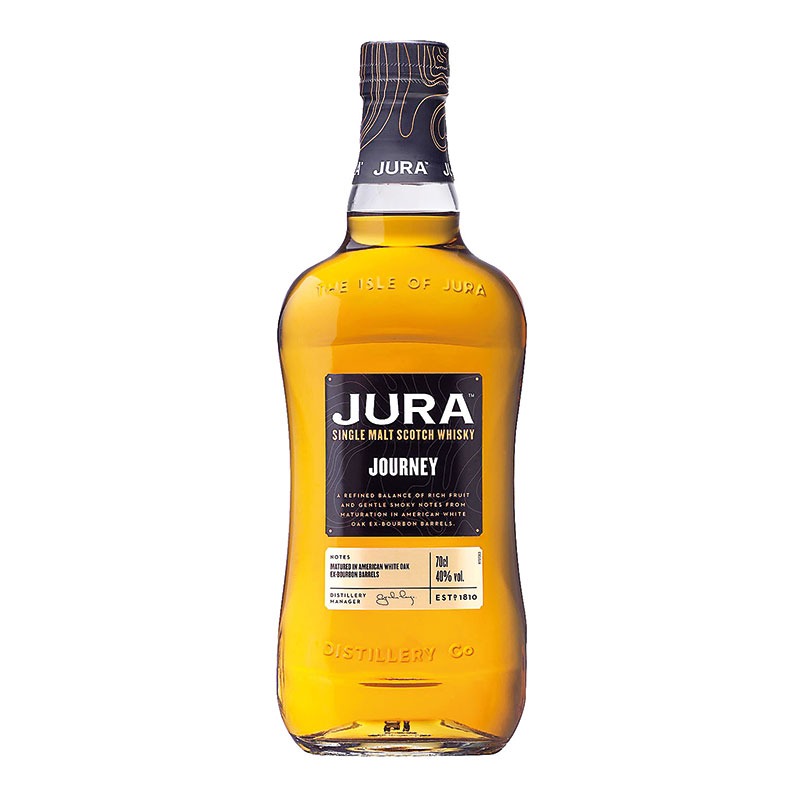
JURA JOURNEY
A subtly smoky and sweet island malt, matured in American White Oak ex-bourbon barrels.
JURA DISTILLERY
jurawhisky.com
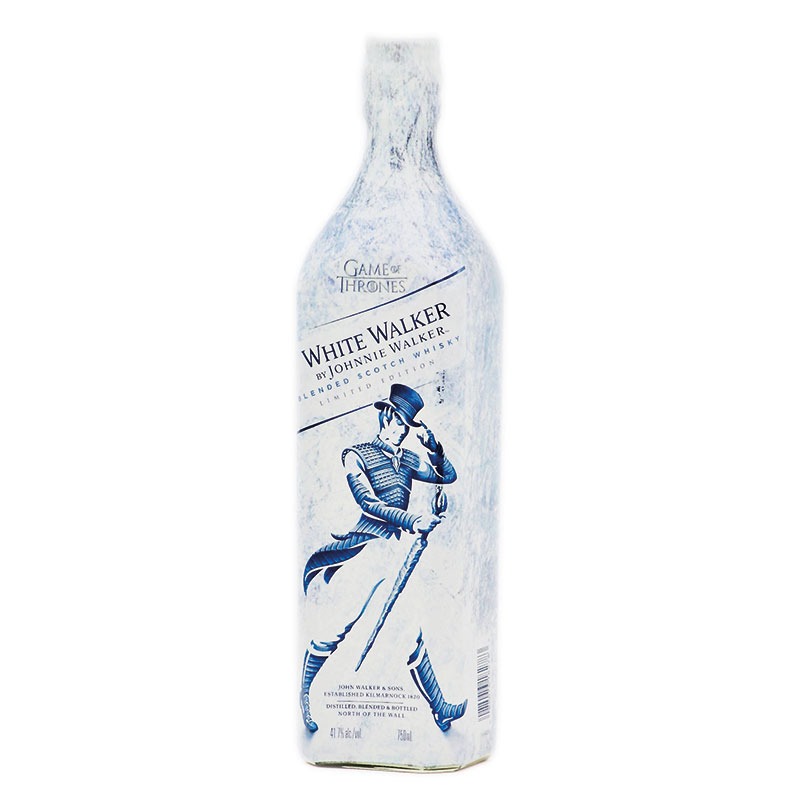
WHITE WALKER
The Scotch features single malts from Cardhu and Clynelish – one of Scotland’s most Northern distilleries.
JOHNNIE WALKER
johnniewalker.com
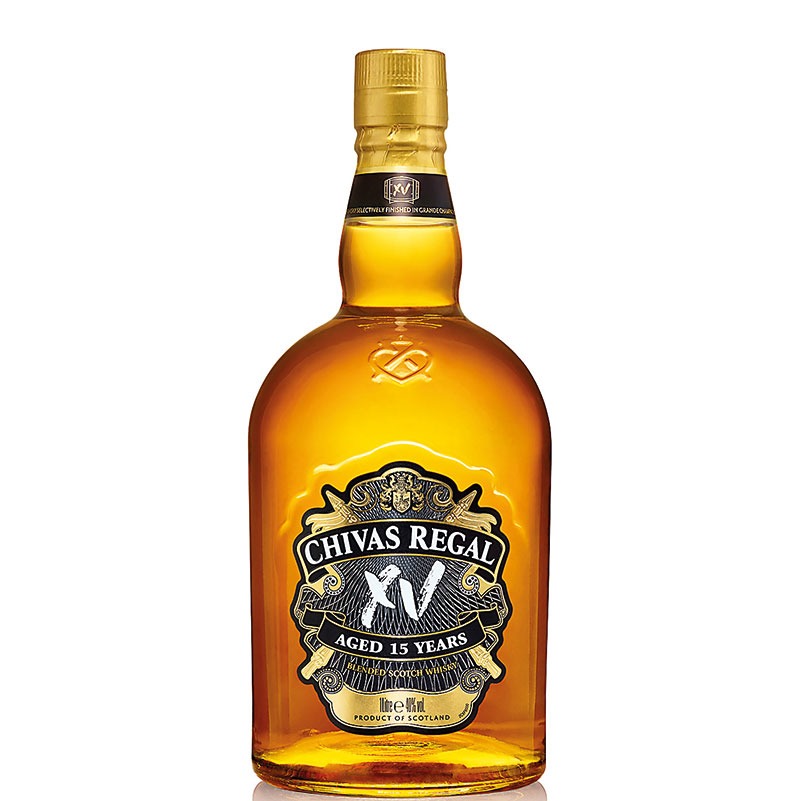
CHIVAS XV
Aged for a minimum of 15 years and selectively finished in Grande Champagne Cognac casks.
FAWAZ HOLDING
fawazholding.com
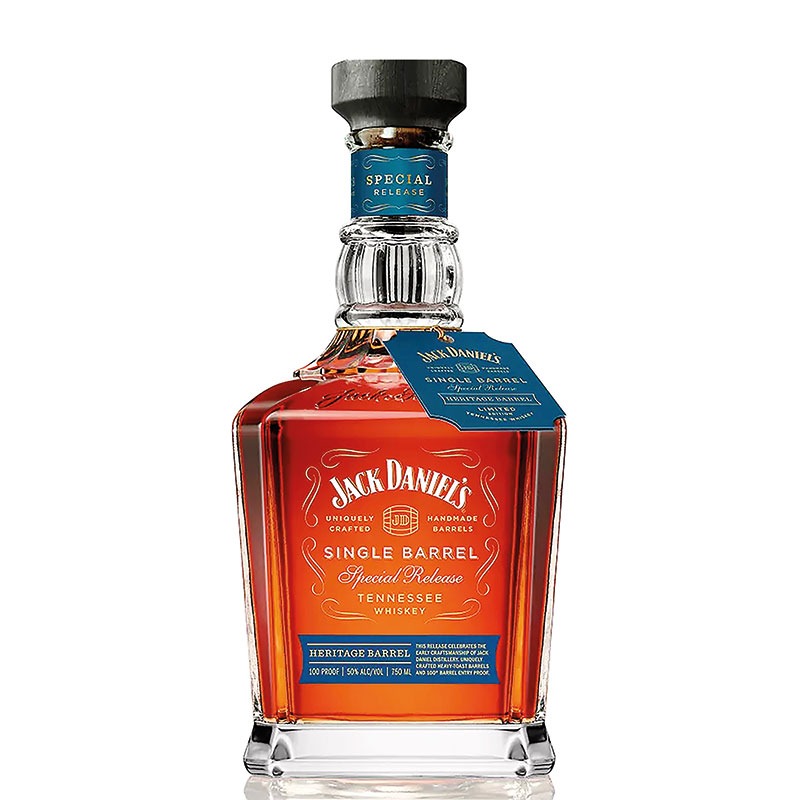
HERITAGE BARREL
Limited to just 200 barrels, Jack Daniel’s Single Barrel ‘Heritage Barrel’ utilizes the unique barrel toasting technique.
JACK DANIEL’S
jackdaniels.com















